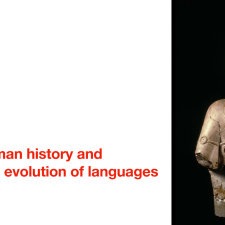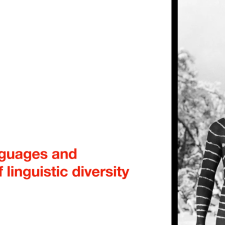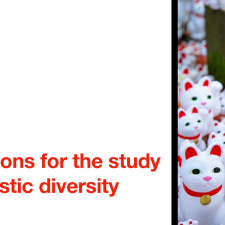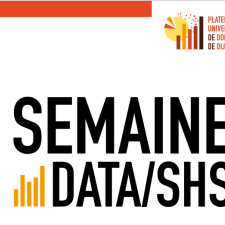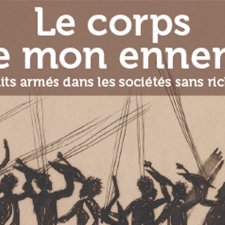Chapitres
- Lecture II │ Probing cognition and behavior with the world's languages05'48"
- In natural languages, are sounds and meanings associated ?07'52"
- Structure-to-bias argument03'38"
- Bias-to-structure argument37'00"
- Can we feasibility claim that certain linguistic traits are preferred over others regardless of history ?24'52"
- End of lecture II00'13"
Notice
Unraveling linguistic diversity through the lens of natural experiments │ Lecture II │ D. E. Blasi
- document 1 document 2 document 3
- niveau 1 niveau 2 niveau 3
Descriptif
In this course we will approach the study of worldwide linguistic diversity under the point of view of observational statistical inference. The guiding question of the course will be: what can be learned about the nature of language given the limited and contingent sample of languages that we got to observe and document? We will investigate what can be inferred from the aggregation of comparative linguistic data (including large-scale typological datasets,
→Strands 1+2+3), and what models of human cognition, behavior, and history are implied by those inferences. The course will be interdisciplinary but tailored for non specialists, combining comparative linguistics, biological anthropology, statistical inference, cultural evolution, as well as an array of observations from other disciplines.
II. Probing cognition and behavior with the world’s languages
Starting from traditional linguistic typology approaches, we explore claims about language and its relation to cognition, behavior and development based on arguments depending on cross-linguistic frequency (→Strands 2+4), the role of rara and rarissima, the role of vertical and horizontal transmission in shaping typological distributions (→Strand 3), and the underlying assumptions about possible and probable languages that come with cross-linguistic generalizations (→Strands 2+4).
Intervention / Responsable scientifique
Avec les mêmes intervenants et intervenantes
-
Unraveling linguistic diversity through the lens of natural experiments │ Lecture III │ D. E. Blasi
BlasiDamián E.Cycle de conférences du Prof. Damián Blasi │ dans le cadre de la chaire internationale du Labex EFL au mois d’avril 2025. Pour une série de quatre séminaires sur le thème « Unraveling linguistic
-
Unraveling linguistic diversity through the lens of natural experiments │ Lecture IV │ D. E. Blasi
BlasiDamián E.Cycle de conférences du Prof. Damián Blasi │ dans le cadre de la chaire internationale du Labex EFL au mois d’avril 2025. Pour une série de quatre séminaires sur le thème « Unraveling linguistic
-
Unraveling linguistic diversity through the lens of natural experiments │ Lecture I │ D. E. Blasi
BlasiDamián E.Cycle de conférences du Prof. Damián Blasi │ dans le cadre de la chaire internationale du Labex EFL au mois d’avril 2025. Pour une série de quatre séminaires sur le thème « Unraveling linguistic
Sur le même thème
-
Unraveling linguistic diversity through the lens of natural experiments │ Lecture IV │ D. E. Blasi
BlasiDamián E.Cycle de conférences du Prof. Damián Blasi │ dans le cadre de la chaire internationale du Labex EFL au mois d’avril 2025. Pour une série de quatre séminaires sur le thème « Unraveling linguistic
-
Unraveling linguistic diversity through the lens of natural experiments │ Lecture III │ D. E. Blasi
BlasiDamián E.Cycle de conférences du Prof. Damián Blasi │ dans le cadre de la chaire internationale du Labex EFL au mois d’avril 2025. Pour une série de quatre séminaires sur le thème « Unraveling linguistic
-
La continuation des fastes d’Ovide par les Dijonnais Claude-Barthelemy Morisot : l’analyse stylomét…
La présentation commencera par une brève contextualisation de la recherche: Claude-Barthélemy Morisot (auteur Dijonnais du XVIe siècle) a complété l’œuvre de fastes d’ovide, en écrivant les 6 livres
-
La guerre des concepts
DarmangeatChristopheles conflits collectifs échappent encore à une typologie raisonnée. On proposera une classification permettant d'aborder les confrontations sociales, qui se fonde à la fois sur leurs mobiles et sur


